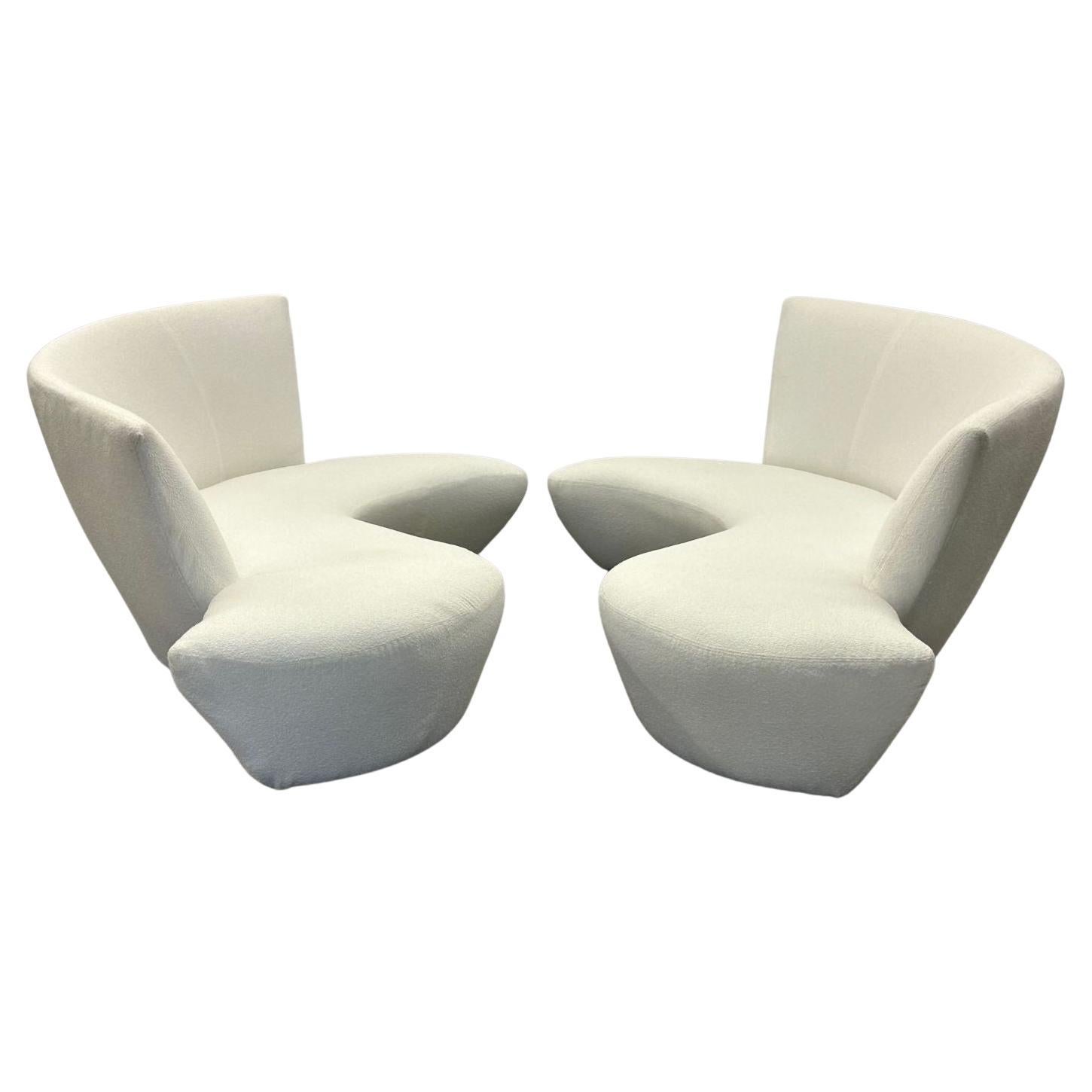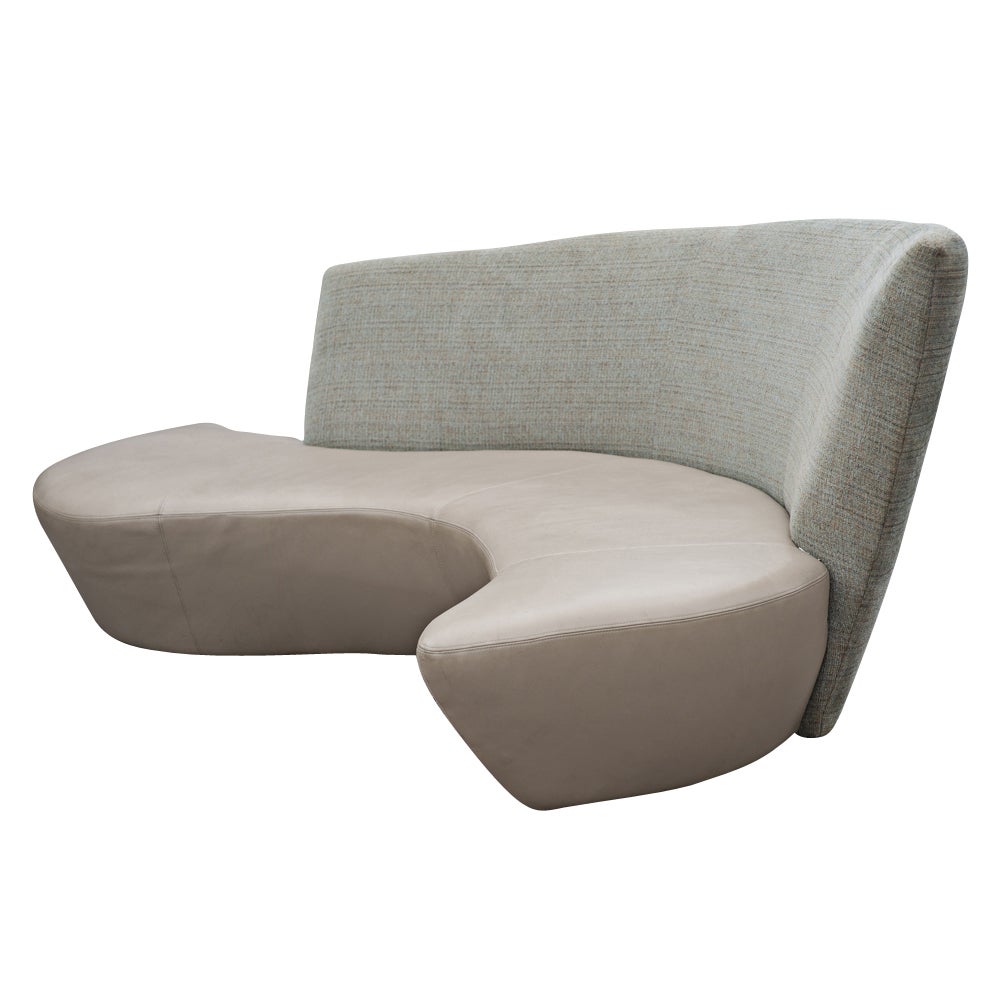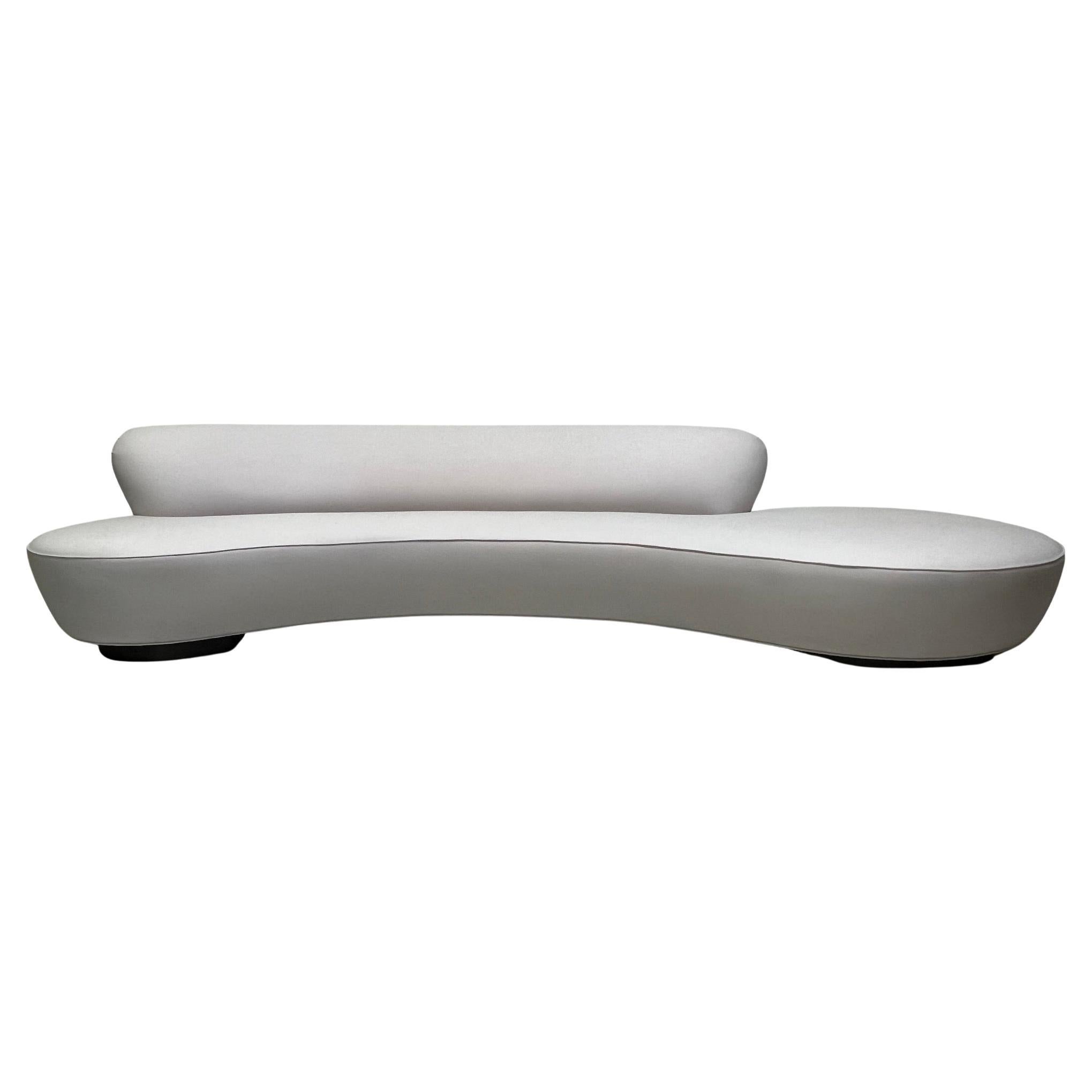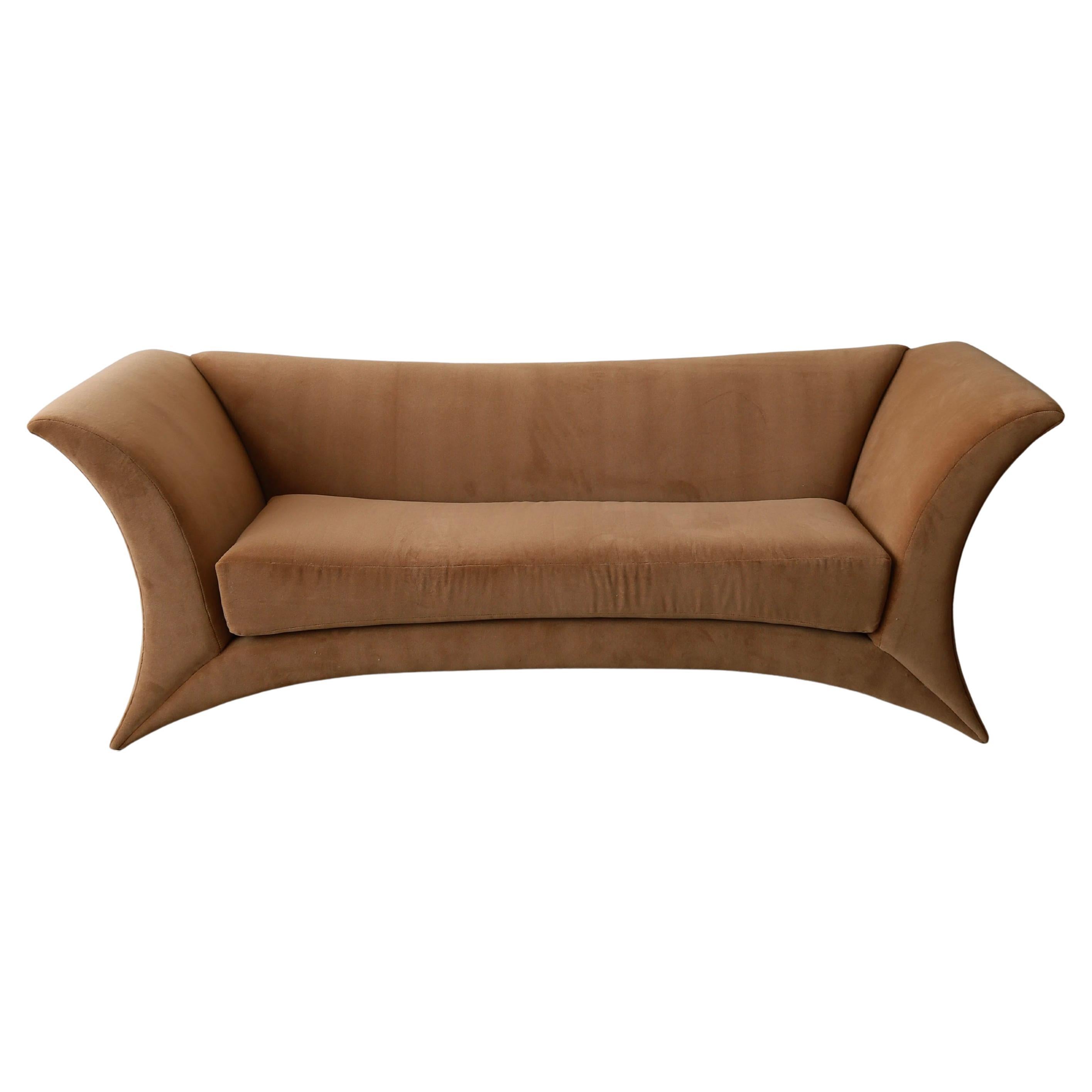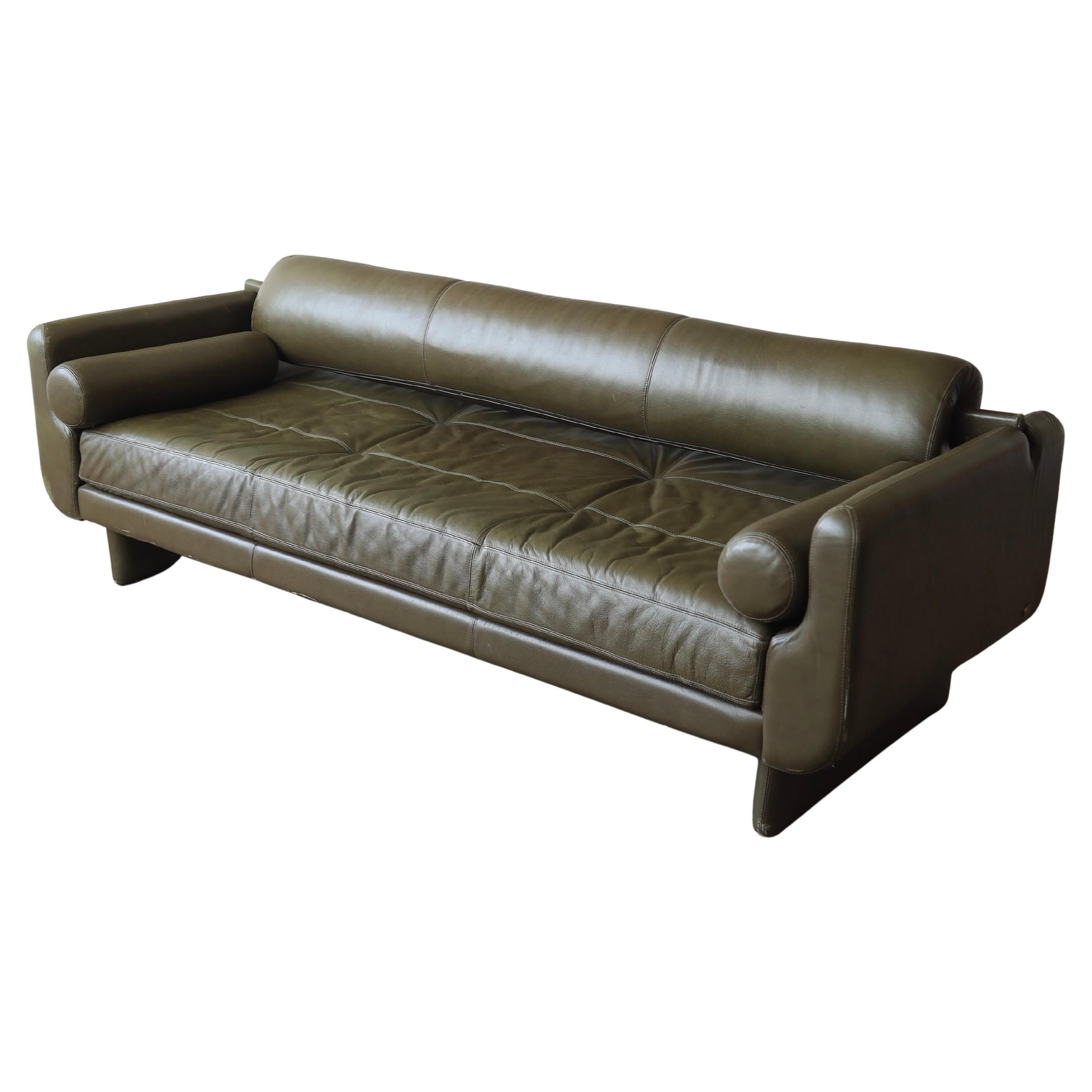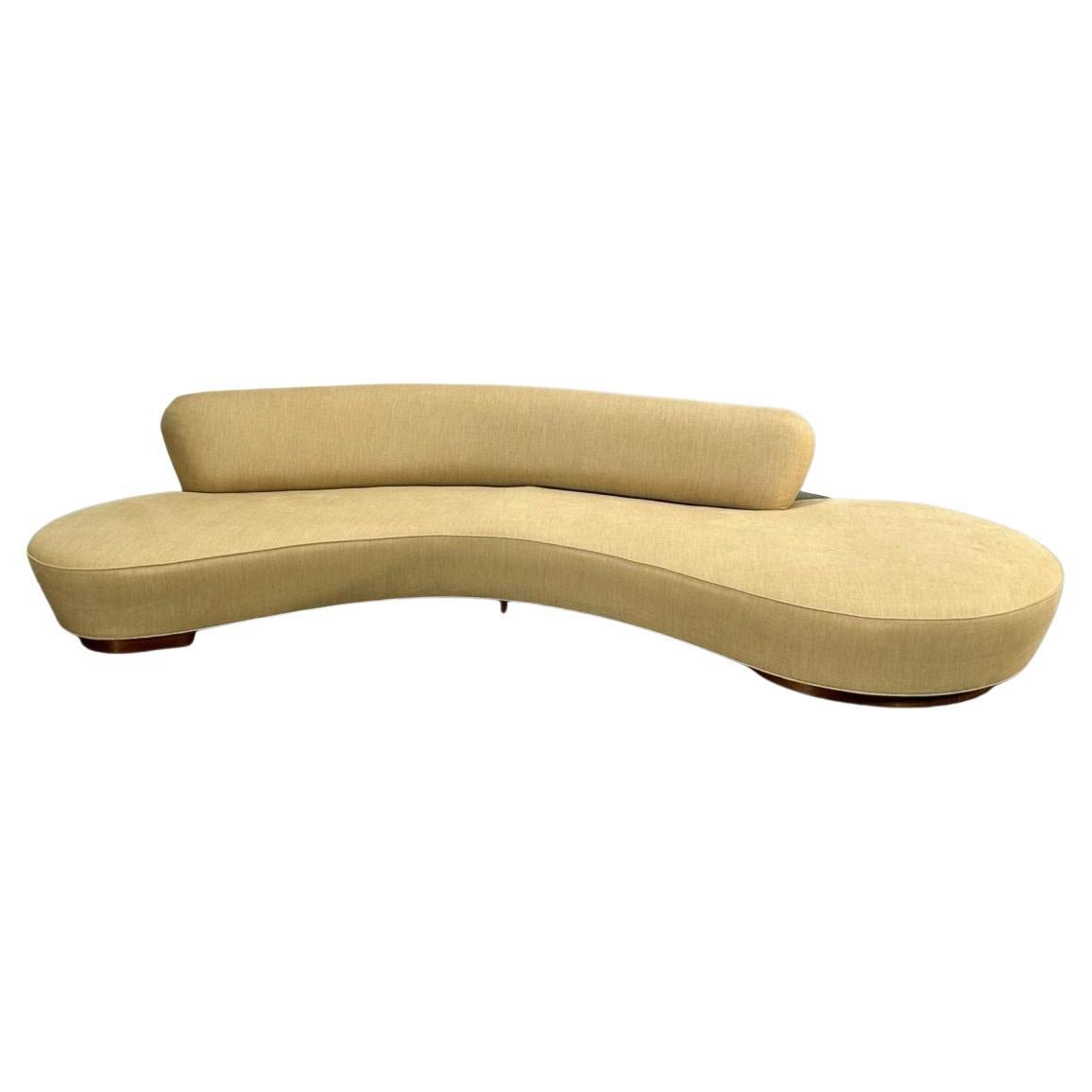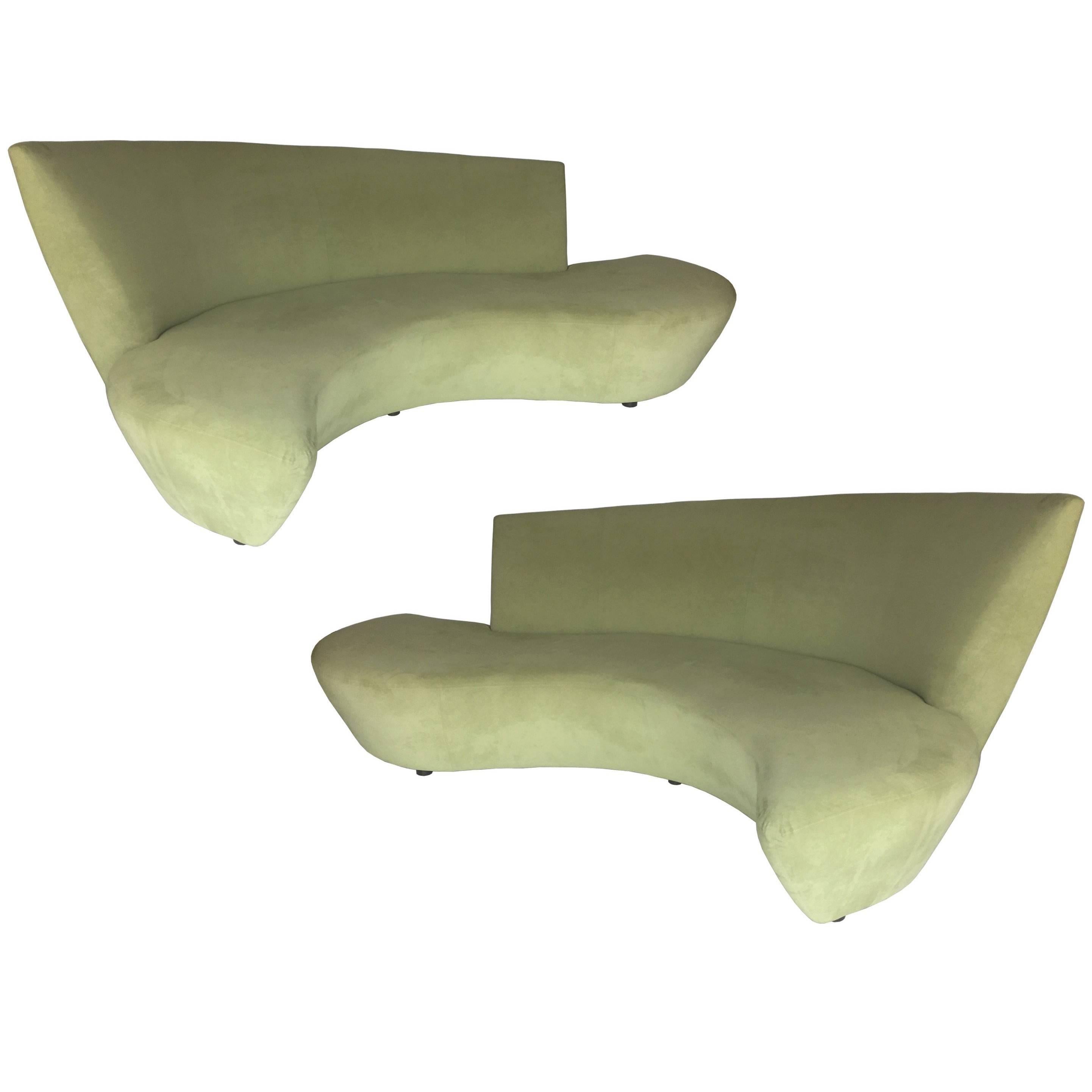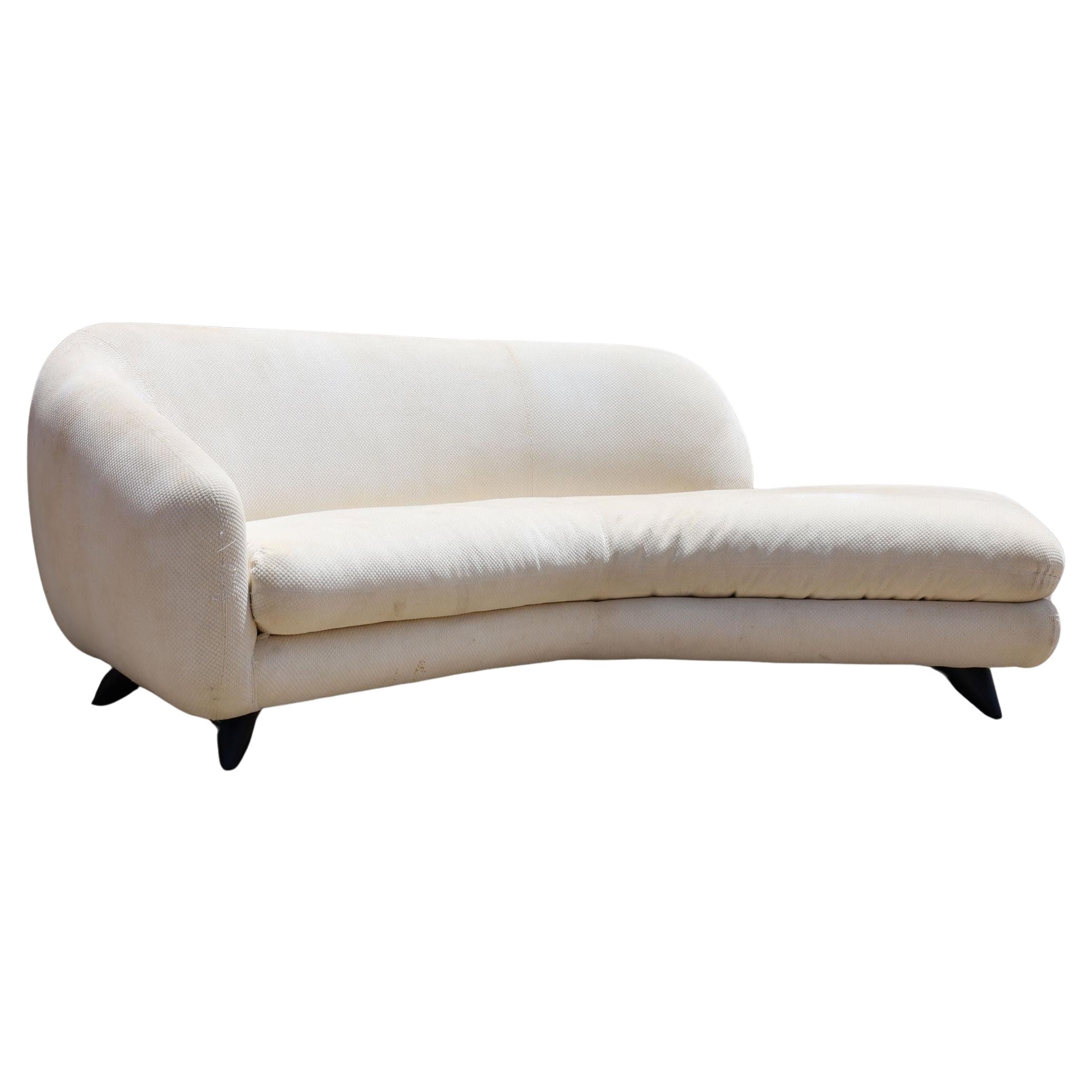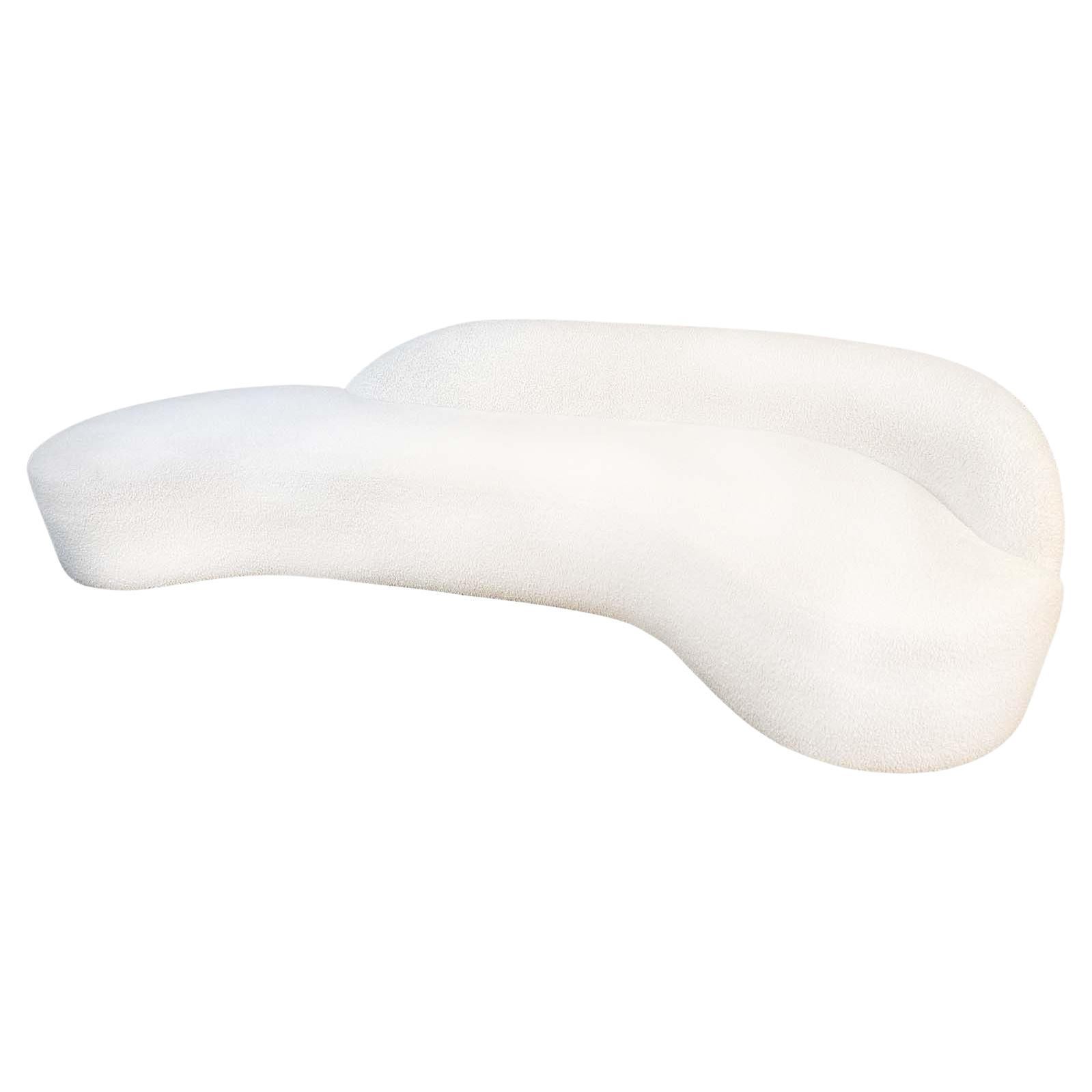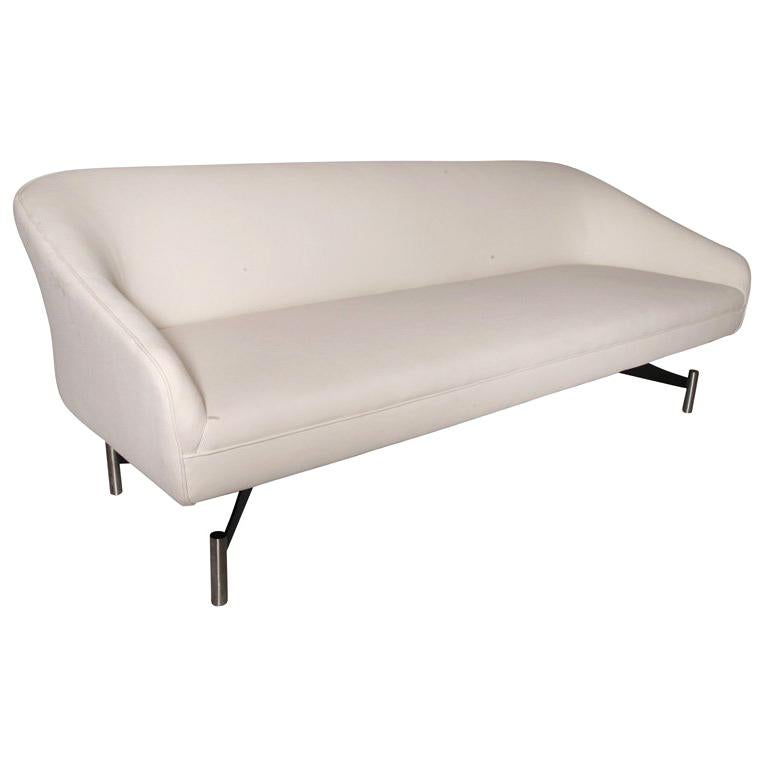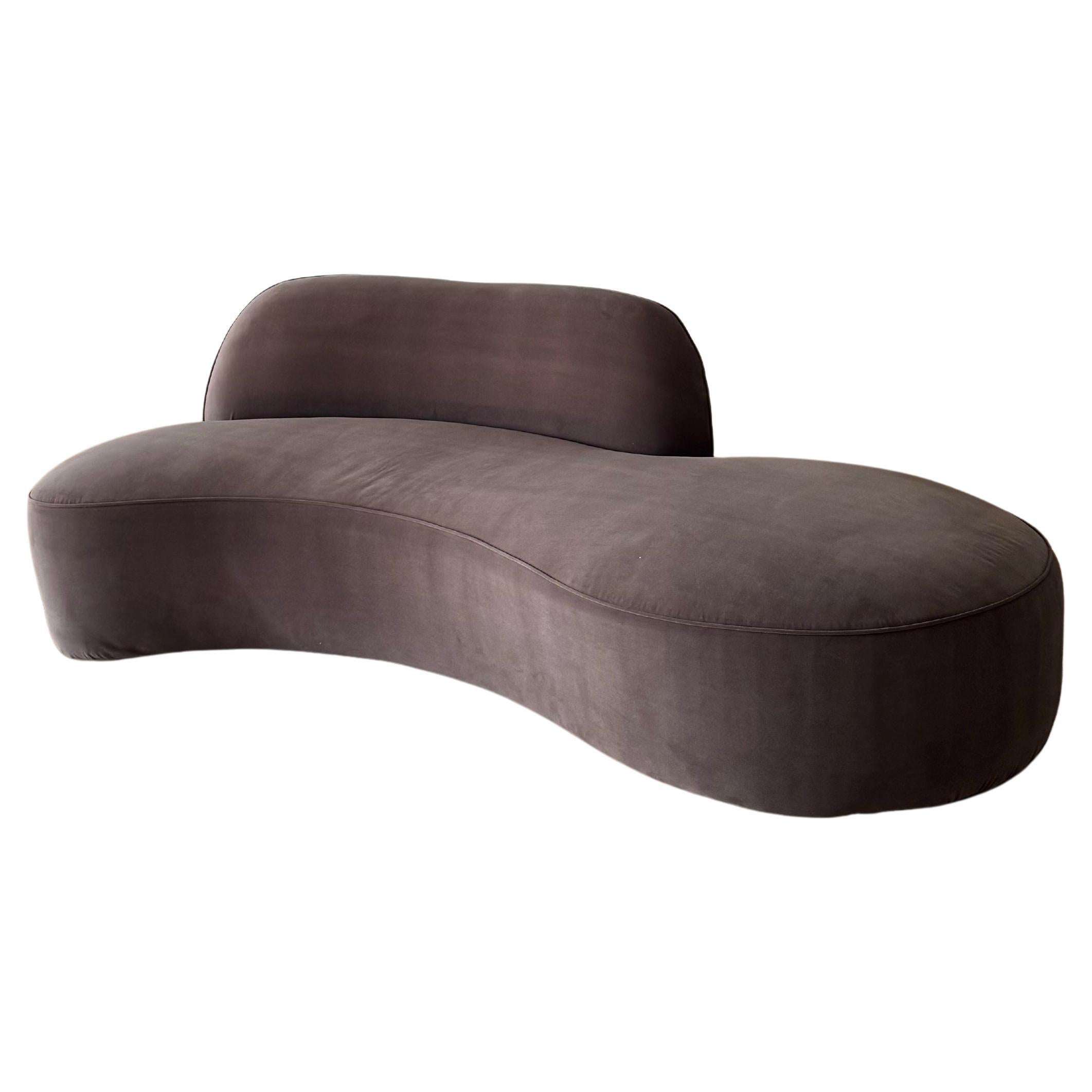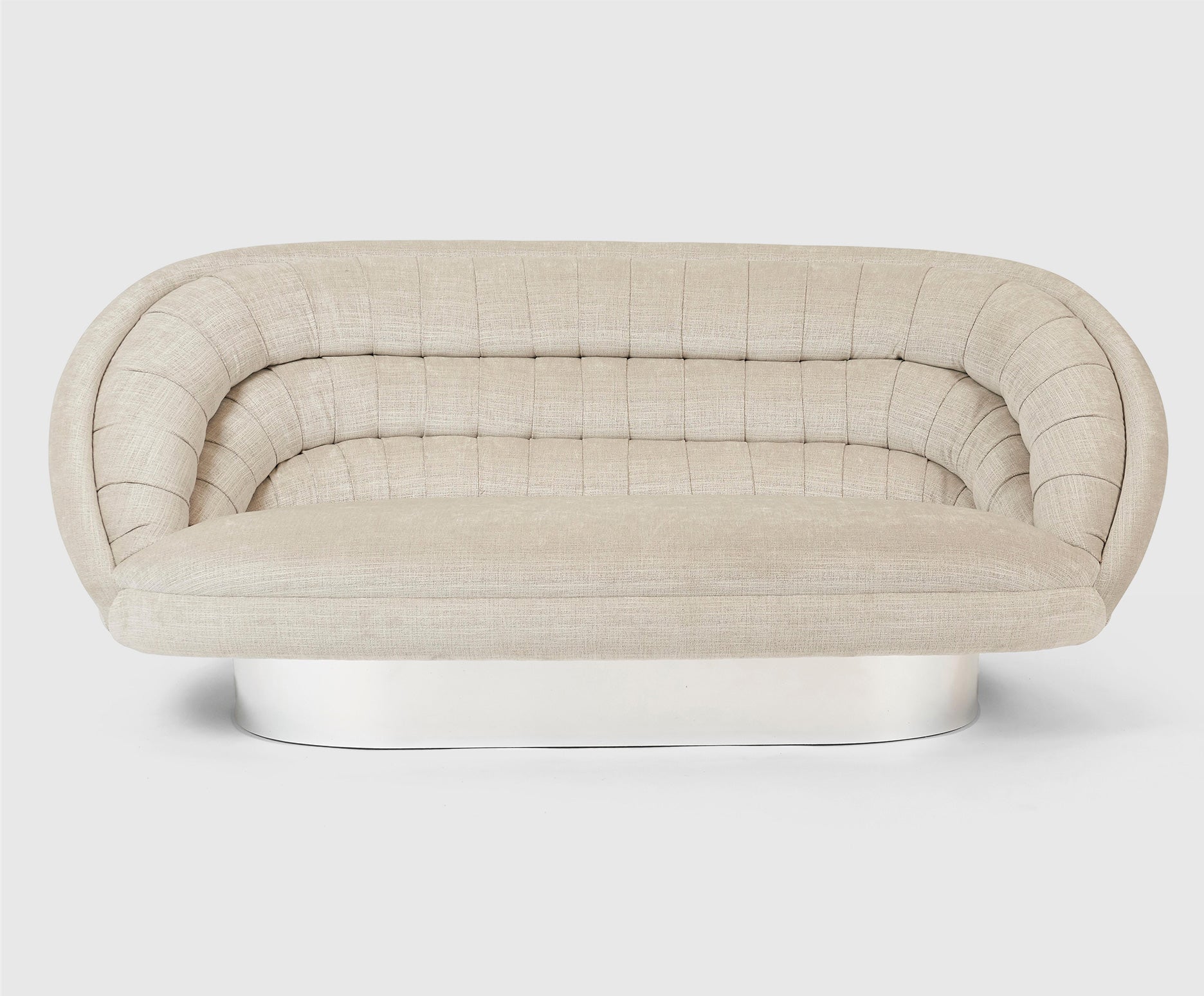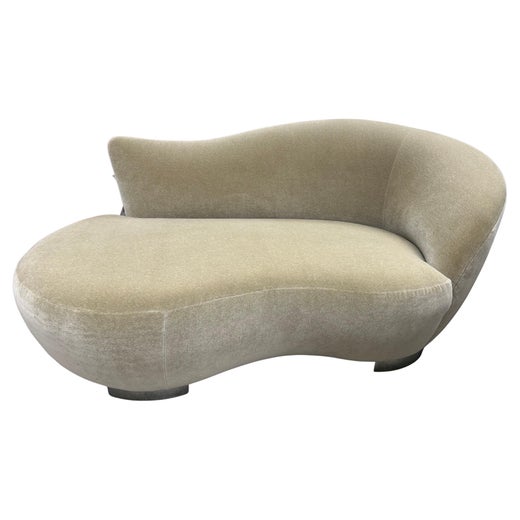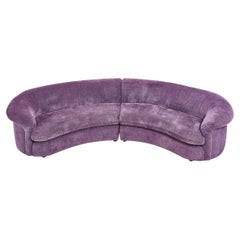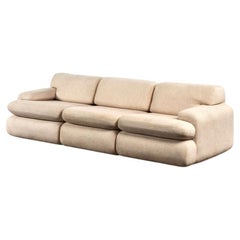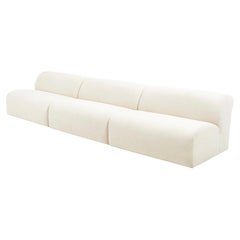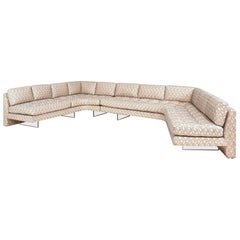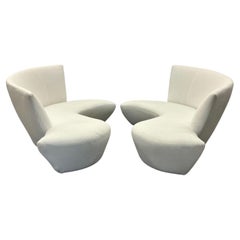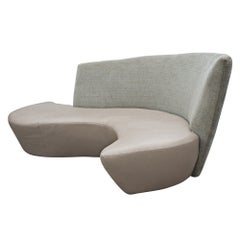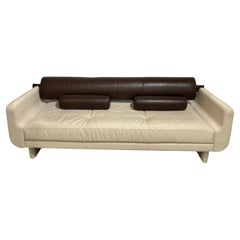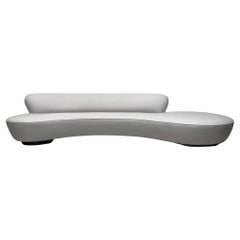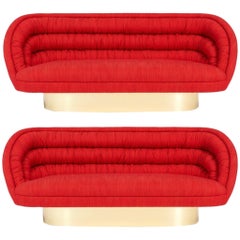
Vladimir Kagan Crescent Sofas on Brass Bases
View Similar Items
Vladimir Kagan Crescent Sofas on Brass Bases
About the Item
- Creator:Vladimir Kagan (Designer)
- Design:Crescent SofaCrescent Series
- Dimensions:Height: 30 in (76.2 cm)Width: 69 in (175.26 cm)Length: 30 in (76.2 cm)Seat Height: 15 in (38.1 cm)
- Style:Mid-Century Modern (Of the Period)
- Materials and Techniques:
- Place of Origin:
- Period:
- Date of Manufacture:1970s
- Condition:Reupholstered. Fully restored.
- Seller Location:Chicago, IL
- Reference Number:Seller: 20200703vk1stDibs: LU918719724462
Crescent Sofa
Shapely, showy and deliciously plush, the furniture of Vladimir Kagan (1927–2016) reads like the backdrop to the most enticing mid-century cocktail party. And as Kagan counted Marilyn Monroe and Andy Warhol among his client base, it likely often was. Although it’s representative of the same experimentation with geometry, Kagan’s rare Crescent sofa — designed in 1970 — stands in contrast to some of his more famous pieces, whose swoops and curves came to define the furniture maker’s legacy.
In comparison to Kagan’s sprawling Serpentine or Petite Cloud, for example, the Crescent sofa is sumptuous and plump, with a concave shape and ruched upholstery that looks set to envelop its sitter. But a sleek base of polished metal keeps the sofa from feeling heavy. Instead, it appears to float above the ground, lending it an air of weightlessness that’s perplexing given its voluminous form.
Such distinctive contrasts weren’t uncommon for Kagan, who created a new genre of sophisticated, artful furniture that drew certain inspiration from the low-slung look of mid-century modernism but added organic dynamism. Kagan was first exposed to design by his father, a master cabinetmaker who moved his family from his native Russia to Germany and then to the United States when Vladimir was a child. After attending what was then the High School for Industrial Arts in New York City, Kagan studied architecture at Columbia University and subsequently learned to make furniture in his father’s workshop. By the early 1950s, the designer had set up his own business, and he would become known for luxurious, curvilinear seating that practically begged for lounging.
While many of Kagan’s furniture designs are still produced by his eponymous company today, the Crescent is not, making vintage versions of the piece especially intriguing to collectors.
Vladimir Kagan
The pioneers of modern furniture design in America in the mid-20th century all had their moments of flamboyance: Charles and Ray Eames produced the startling, biomorphic La Chaise; George Nelson’s firm created the Marshmallow sofa; Edward Wormley had his decadent Listen to Me chaise. But no designer of the day steadily offered works with more verve and dynamism than Vladimir Kagan. While others, it seems, designed with suburban households in mind, Kagan aimed to suit the tastes of young, sophisticated city-dwellers. With signature designs that feature sleekly curved frames and others that have dramatic out-thrust legs, Kagan made furniture sexy.
Kagan’s father was a Russian master cabinetmaker who took his family first to Germany (where Vladimir was born) and then to New York in 1938. After studying architecture at Columbia University, Kagan opened a design firm at age 22 and immediately made a splash with his long, low and sinuous Serpentine sofa. Furniture lines such as the Tri-symmetric group of glass-topped, three-legged tables and the vivacious Contours chairs soon followed.
Kagan’s choices of form and materials evolved through subsequent decades, embracing lucite, aluminum and burl-wood veneers. By the late 1960s, Kagan was designing austere, asymmetrical cabinets and his Omnibus group of modular sofas and chairs. For all his aesthetic élan, Kagan said that throughout his career, his touchstone was comfort. “A lot of modern furniture was not comfortable. And so comfort is: form follows function. The function was to make it comfortable,” he once commented. “I created what I called vessels for the human body.”
A diverse group of bodies have made themselves at home with Kagan designs. Among the famous names who commissioned and collected his designs are Marilyn Monroe, Gary Cooper, Andy Warhol, David Lynch, Angelina Jolie and Brad Pitt, and firms such as Gucci and Giorgio Armani. His work is in numerous museum collections, including those of the Victoria & Albert and the Metropolitan Museum of Art.
Because of its idiosyncrasy, Kagan’s work did not lend itself to mass-production. Kagan never signed on with any of the major furniture-making corporations, and examples of his designs are relatively rare. As you will see from the offerings on 1stDibs, even decades after their conception, Kagan pieces still command the eye, with their freshness, energy, sensuality and wit.
More From This Seller
View All1990s American Post-Modern Sofas
Velvet
Vintage 1980s American Post-Modern Sectional Sofas
Upholstery
Vintage 1980s American Mid-Century Modern Sectional Sofas
Fabric
Vintage 1970s American Post-Modern Sectional Sofas
Upholstery
Vintage 1970s American Post-Modern Settees
Velvet
Vintage 1960s American Mid-Century Modern Sofas
Brass
You May Also Like
Early 2000s American Mid-Century Modern Sofas
Bouclé, Wood
Late 20th Century American Mid-Century Modern Sofas
Leather, Fabric
Early 2000s American Modern Sofas
Leather
Vintage 1950s Sofas
Fabric
Vintage 1980s American Post-Modern Sofas
Velvet
Early 2000s American Post-Modern Sofas
Leather
